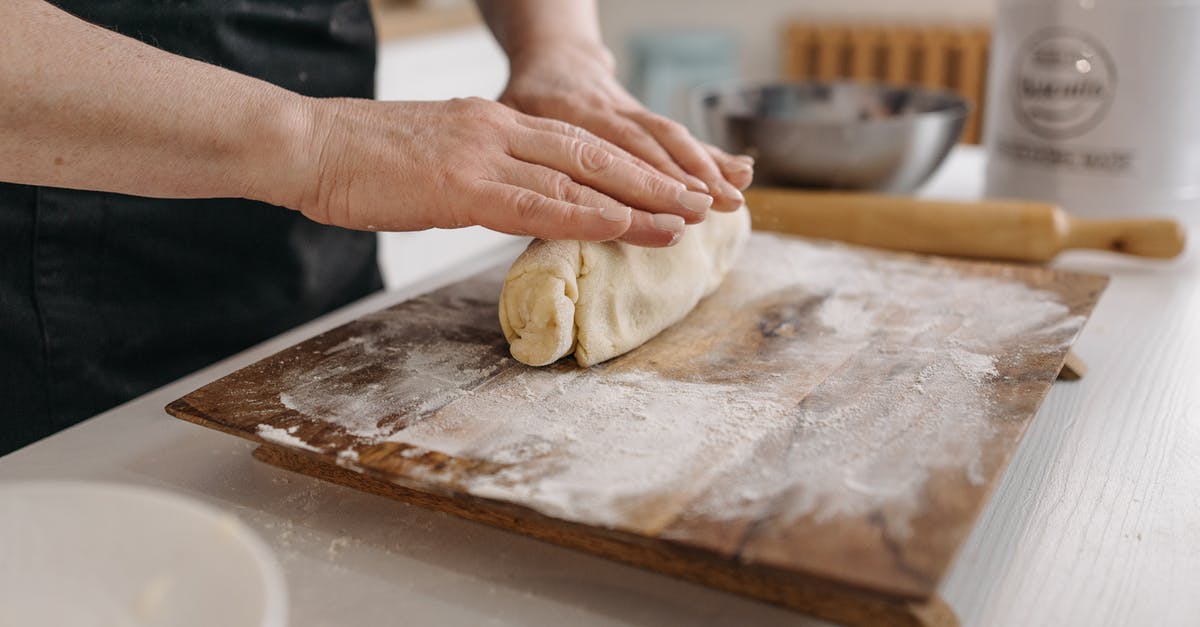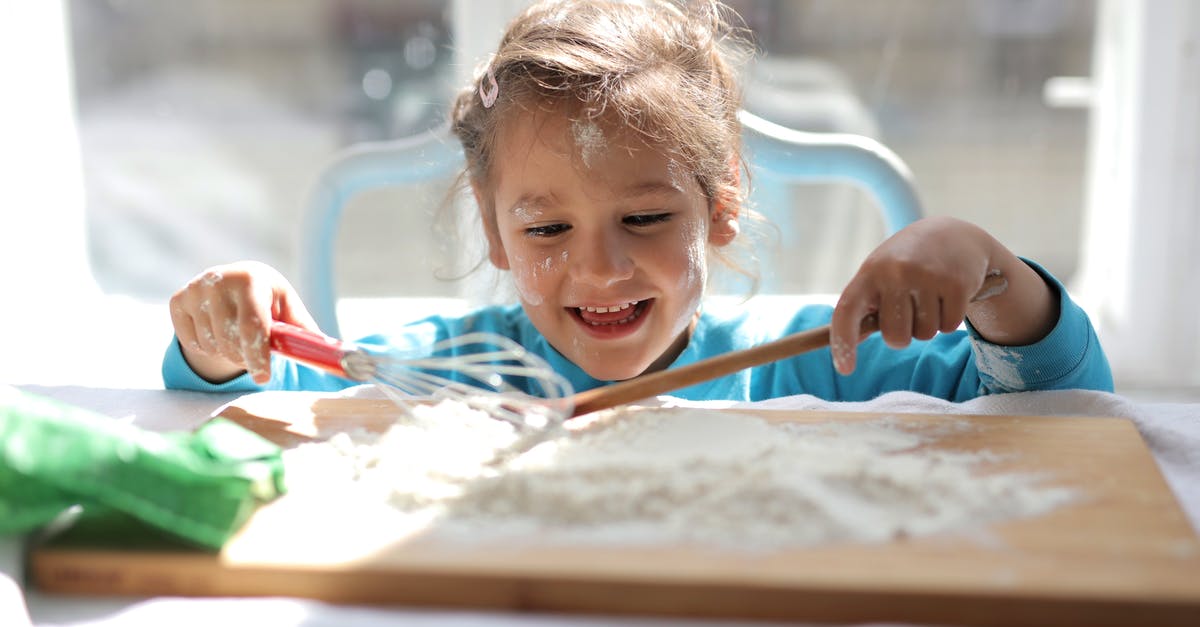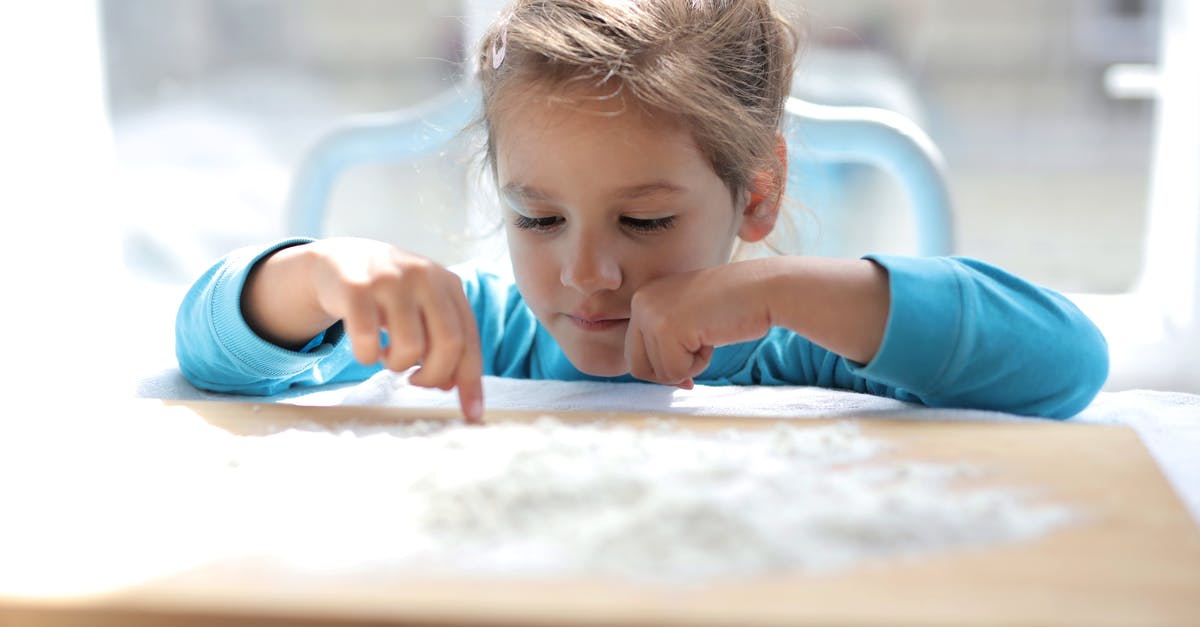Additional flour threshold: when and how to perform?

For whatever reason (in my case, usually rookie mistakes), sometimes dough - after no additional flour - is worked/kneaded to a point where it does not reach a supple state/texture and instead is more porridge-like than anything else.
It is at this point I find myself sometimes, and I'm wondering how I can consistently and efficiently resolve this issue with a simple approach. I know more flour is certainly a way to mitigate this problem, but evaluating the quantity (and type) ad-hoc is something I simple do not know how to do.
What's a workable solution to this type of situation?
Best Answer
Adding more flour to a bread recipe until it looses stickiness is a mistake many inexperienced bread bakers make, and one I made myself. Dough recipes have a hydration level, which is a way of expressing the amount of water in comparison to flour by weight. A higher hydration level gives a more open texture with bigger holes, lower hydration gives a more dense loaf with smaller holes and a tighter crumb. High hydration doughs are stickier and looser than low hydration doughs, and it's nothing to worry about. Ciabatta is a great example of a very high hydration dough that is essentially a floury puddle, and that's normal for that recipe.
Recipes have a hydration level, if you add more flour than the recipe calls for you will reduce the hydration and you'll end up with a denser loaf. If you keep adding flour until it can't absorb anymore you'll get a barely edible brick. My focaccia recipe is very sticky and runny, but if I added more flour to it I'd ruin it.
I'm not saying I never add a sprinkle of flour to my bread if it's a bit too sticky or loose, but it's rare. If you are getting bad or inconsistent results I would try these things before adding more flour:
- Weigh everything, including the water, in grams. My baking never got consistent until I measured by weight instead of volume, because you can never get exact with volume measurements. I convert all my recipes to metric, it's a minor one-time effort that takes the guesswork out of things. 10 grams of water is 10ml, i.e. two teaspoons. It may not sound like much but it can make a difference in a dough, and chances are you won't be able to tell 100ml from 110ml in a measuring cup. Weighing water lets you get the right amount of hydration
- Take notes, if you follow a recipe and it still is a bit wet then take a note to lower the water content by 10-15 grams next time. Once you find the right balance note that too
- Make sure you are using the right type of flour for the recipe. Bread flours contain more of the proteins that form gluten, and gluten formation absorbs water. If you are using lower protein flour it will absorb less water. If plain flour is all you can get ahold of then it will still make bread, you will need a bit less water. Course flours absorb less water than fine flour, so if you are using a coarse whole wheat in place of a finer flour you will need to adjust the recipe
- Control the water, not the flour. If you have a recipe you suspect may have too much hydration it's better to withhold some of the water and add it in later if it's needed rather than adding it all and needing to add more flour. This way you keep the balance of flour(s), salt and yeast right
- Remember that the purpose of kneading is to hydrate the dough and ensure a thorough distribution of the ingredients. Gluten forms naturally, helped by yeast, kneading doesn't develop gluten, it just gets it there faster by pushing all the water around. So when you start there will be a lot of unabsorbed water, and it will be sticky. This is natural, you just need to keep working the dough
- Also remember that rising changes the dough structure through yeast action and gluten development, so a dough that is a bit loose and sticky may firm up after a rise
- Kneading technique may make a difference, you may just need to do it a bit longer
So, before you think about adding more flour be aware of the result you are trying to get, and keep the above in mind.
Pictures about "Additional flour threshold: when and how to perform?"



Should you add all the flour at once?
The second chance to over-mix comes when you add the flour: Dorie recommends adding the flour all at once (you mix less than you would if you added it in several additions), pulsing until the risk of projectile ingredients has dissipated, and then mixing on low speed until the flour \u201cdisappears into the dough or is ...How long should the mixture sit before adding the flour?
An autolyse is the gentle mixing of the flour and water in a bread recipe, followed by a 20 to 60 minute rest period. After the rest, the remaining ingredients are added and kneading begins. This simple pause allows for some rather magical changes to occur in your bread dough.Can I add more flour to bread dough?
The trick is using more flour than you may think is okay, but as you'll see we aren't working the flour into the dough, we're just using it to keep the dough from sticking to our hands. As we gently handle the dough we add more flour. This allows us to shape, without overworking the dough.Real-Time PCR Thresholds and Where to Place Them -- Ask TaqMan®: Ep. 6
Sources: Stack Exchange - This article follows the attribution requirements of Stack Exchange and is licensed under CC BY-SA 3.0.
Images: Pavel Danilyuk, Andrea Piacquadio, Andrea Piacquadio, Andrea Piacquadio
